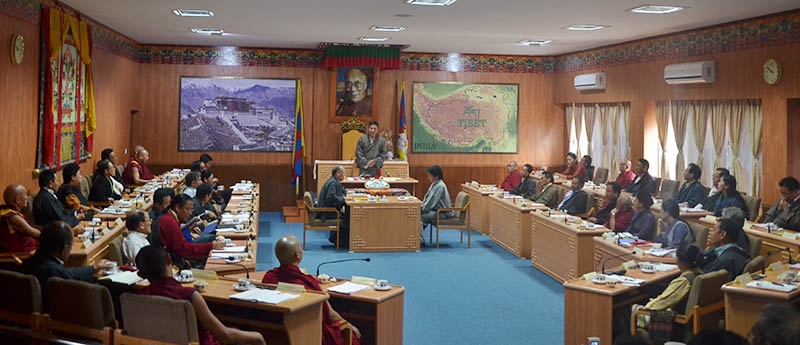
(TibetanReview.net, Mar29, 2015) – The Tibetan Parliament in Exile at Dharamshala, India, on Mar 26 voted to give a separate, one-seat parliamentary representation to Tibetans living in the Australasian and Asian countries other than India, Nepal and Bhutan. This was necessitated mainly by the rise in the number of Tibetans living in Australia after a number of former political prisoners from Chinese ruled Tibet living in India were given asylum by Canberra over the years.
A proposal to amend the Charter of Tibetans in Exile to make this possible was supported by 29 members in the 44-member parliament with some absentees.
The Jonang tradition of Tibetan Buddhism, however, failed to get enough votes to be entitled to separate religious parliamentary seats. An amendment proposal to give such representation to them received only 17 votes, six short of the required two-thirds majority. The Jonang followers, very few of whom had fled Tibet after the 1959 uprising and whose only monastery in exile is the one presented to them years ago by the Dalai Lama at Shimla, India, have been petitioning for separate representation over a number of years. In 2011, at the Dalai Lama’s prompting, a conference of top Tibetan religious leaders formally recognized Jonang as a separate tradition of Tibetan Buddhism.
About 30 Jonang supporters gathered outside the parliament to protest against the failure of the Charter amendment.
The parliament began its session on Mar 16 with the main agenda of discussing and adopting the annual budget of the Central Tibetan Administration. During its 13-day session, the parliament also discussed a number of other issues, including about the open show of disagreement or spat between sections of supporters of the exile administration’s middle way approach of seeking autonomy under Chinese rule and independence during the Mar 10 uprising rally in New York City. The parliament also heard the report of its Public Accounts Committee, which revealed glaring shortcomings in the financial accounts of some of the well known autonomous undertakings under the Central Tibetan Administration.


